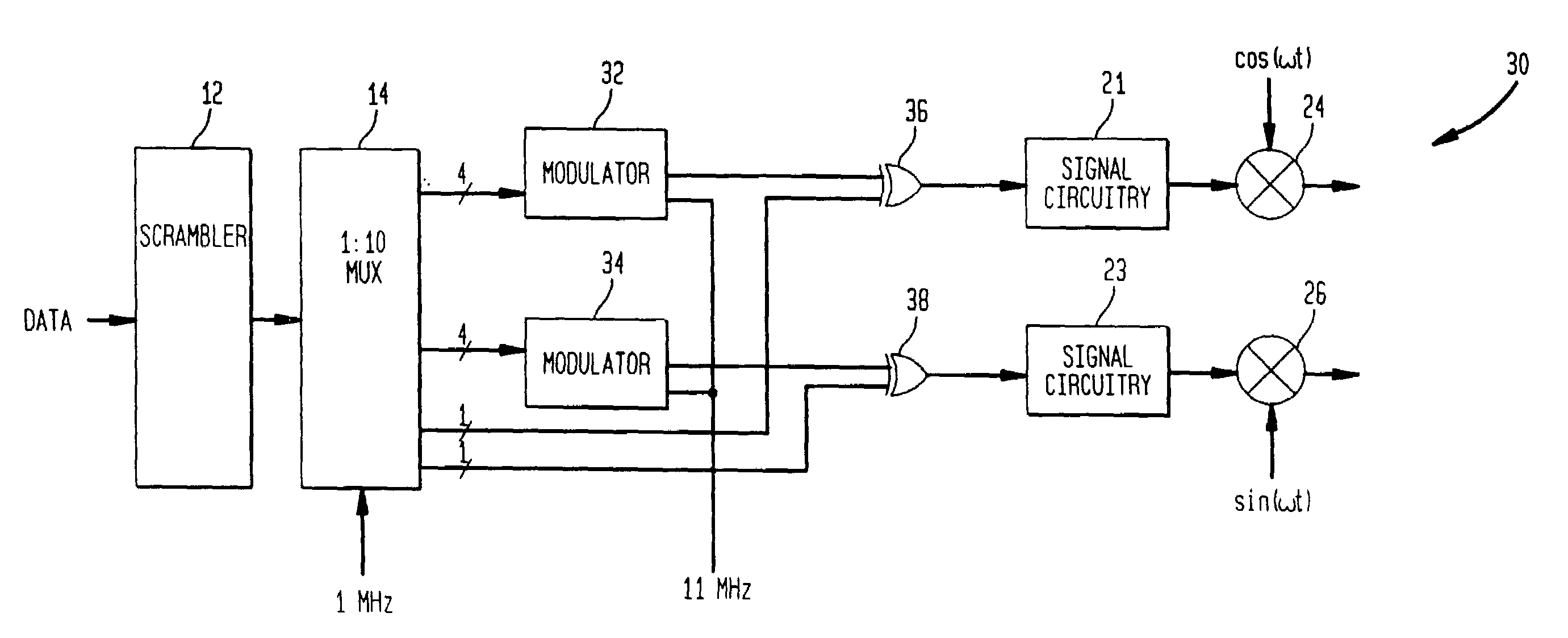Digital modulation system using extended code set
a digital modulation and code set technology, applied in the field of wireless communication systems, can solve the problems of small noise and multipath performance degradation, and achieve the effects of increasing the data rate, maintaining the coding gain, and increasing the data rate of the system
- Summary
- Abstract
- Description
- Claims
- Application Information
AI Technical Summary
Benefits of technology
Problems solved by technology
Method used
Image
Examples
Embodiment Construction
[0027]Illustrative embodiments of the digital (de)modulation system to achieve higher data rates while providing acceptable autocorrelation sidelobes and cross-correlation values for a wireless communications system is described below. FIG. 2 shows a digital modulator 28 according to the principles of the present invention. In response to data bits forming a data symbol, the modulator 28 chooses a corresponding one of M codes of length N, where M represents an extended number of codes of length N when compared to conventional M-ary keying systems. In conventional M-ary keying systems, the number of possible codes M is not more than the code length N in chips. In the present invention, the number M of codes is always larger than the code length N. In some embodiments, the code set can be derived from orthogonal codes which are modified to reduce the autocorrelation sidelobes associated with the orthogonal codes, and / or the code set is derived using a complementary code which provides...
PUM
 Login to View More
Login to View More Abstract
Description
Claims
Application Information
 Login to View More
Login to View More - R&D
- Intellectual Property
- Life Sciences
- Materials
- Tech Scout
- Unparalleled Data Quality
- Higher Quality Content
- 60% Fewer Hallucinations
Browse by: Latest US Patents, China's latest patents, Technical Efficacy Thesaurus, Application Domain, Technology Topic, Popular Technical Reports.
© 2025 PatSnap. All rights reserved.Legal|Privacy policy|Modern Slavery Act Transparency Statement|Sitemap|About US| Contact US: help@patsnap.com



